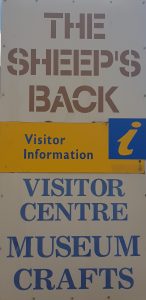About
 The Naracoorte branch of the National Trust of SA was formed in 1966 with the old Rolland Street School as its first home. The opportunity to occupy the present site was offered in 1984, and the first gallery was opened in the former flour mill building in 1986. In this building you can also find a quality craft shop, and the local Council’s Visitor Information Centre (staffed by Council staff and volunteers).
The Naracoorte branch of the National Trust of SA was formed in 1966 with the old Rolland Street School as its first home. The opportunity to occupy the present site was offered in 1984, and the first gallery was opened in the former flour mill building in 1986. In this building you can also find a quality craft shop, and the local Council’s Visitor Information Centre (staffed by Council staff and volunteers).
From the start, the group has been collecting objects, stories and other material related to the wool industry in South Australia’s South East and in Western Victoria: the links of history and family are very strong in the border areas. The collection is a significant one not only because of its range, but also its carefully-preserved, traceable history.
The story of the Naracoorte District is also being gathered, and it is planned to, one day, add an additional building to make this available to the public. In the meantime, the museum’s catalogues and images are being prepared to make them available to a world-wide audience on the internet.
The museum is accredited under the National Museum Standards, acknowledging its attention to careful management, and its enthusiasm for its story.
The old stone mill building houses galleries telling the story of the Australian wool industry in the ‘inside country’. The focus is on the wool shed and the skills and trades of the workers in the industry, moving to the lifestyle of the wool growers over time, and on the impact the industry has had on the environment.
The wool industry focus continues in the ‘Big Shed’, where the unique Robotic Shearer is housed. This piece of technology, developed in South Australia, is displayed as the climax of the slowly evolving technology of hand pieces, presses, and so on, that have served the industry for 200 years.
A quaint old slab-construction wool shed, that began life as a settler’s home, is a museum piece in its own right.
The museum is run entirely by volunteers, who work together regularly once a week, plus a lot of their own time. New helpers, for a short stint or a long term commitment, are warmly welcomed. New ideas and skills are essential to keep the museum living and growing.
We welcome any new information and correction of mistakes.
Some other sites that you may find interesting